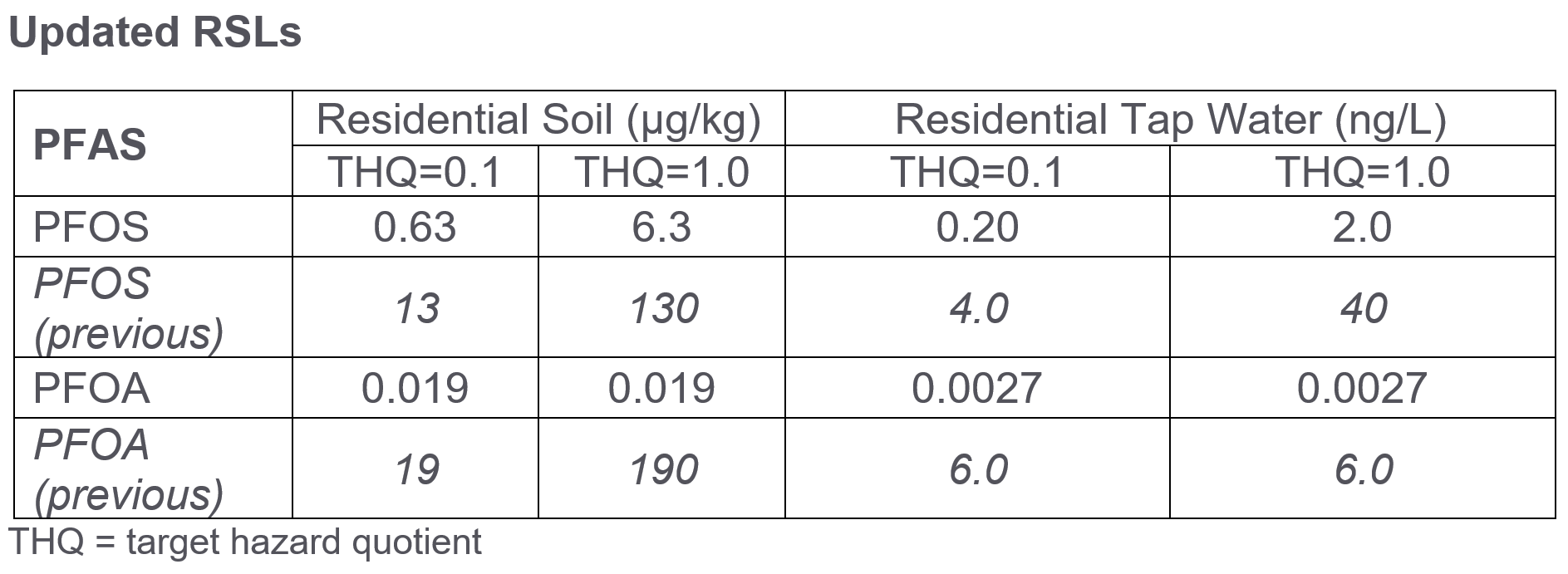
FAA Bill Includes $350 Million for the Replacement of AFFF
On May 16, 2024, the FAA Reauthorization Act of 2024 was signed into public law. The bill, which reauthorizes the U.S. Federal Aviation Administration (FAA) through FY2028, requires the establishment of a grant program to fund airports transitioning from the use of aqueous film-forming foam (AFFF) to fluorine-free alternatives. The legislation authorized $350 million for the PFAS replacement program, expendable over the next five fiscal years. The PFAS replacement program will reimburse eligible airports for a one-time initial cost for acquiring fluorine-free firefighting foam, disposal of AFFF, and the cleaning, disposal, or replacement of any equipment necessary to transition to a fluorine-free firefighting agent.
The FAA is required to establish the PFAS replacement program for airports to access the funding within 90 days of the bill’s enactment. Additionally, the FAA will provide progress reports every 180 days, assessing its efforts in guiding airports on decontaminating the existing aircraft rescue and firefighting vehicles, adhering to the U.S. Environmental Protection Agency’s (EPA’s) environmental limits, and transitioning to fluorine-free foam.
EPA Releases Updated PFAS Regional Screening Levels
On May 14, 2024, the EPA updated its Regional Screening Levels (RSLs) for PFAS. RSLs are site screening levels and are often used as initial cleanup goals at Superfund sites. Soil and water RSLs for PFOS and PFOA were updated, along with soil screening levels (SSLs) for PFOS, PFOA, perfluorohexane sulfonic acid (PFHxS), hexafluoropropylene oxide dimer acid (HFPO-DA), and perfluorononanoic acid (PFNA), based on maximum contaminant levels (MCLs). The update comes after the EPA finalized PFAS MCLs and updated PFAS toxicity values including new subchronic reference dose (RfDs), chronic RfDs, and oral slope factors. Updates are reflected in the RSL Generic Tables, along with RSLs for other PFAS, and the updated residential soil and tap water PFAS RLSs for a target cancer risk (TR) of 1 x 10-6 are provided below.

Updated RSLs are more stringent than the previous RSLs with concentrations set near available analytical detection limits and anthropogenic background levels in North America.
EPA Updates ELGs for Coal-Fired Powered Plants, Suggests PFAS Monitoring
On May 9, 2024, the EPA amended the Steam Electric Power Generating Effluent Limitation Guidelines (ELGs) and Standards. The final rule will become effective on July 8, 2024. ELGs are established by the EPA to regulate point source discharges, such as industrial, commercial, and public sources. ELGs are used to derive technology-based effluent limitations for National Pollutant Discharge Elimination System (NPDES) permits. The rule aligns with the EPA’s PFAS Strategic Roadmap calling action to the need to address potential for PFAS discharges and enhance monitoring of PFAS discharges. The final rule indicates that while the steam electric power sector is not identified as one of the top contributors of PFAS discharges to the environment, PFAS may be present in steam electric discharges and therefore “…permitting or control authorities may appropriately consider whether PFAS monitoring and any further restrictions (e.g., best management practices [BMPs]) would be appropriate at a given facility.”
State Attorneys General Urge EPA to Take Additional Actions on PFAS Under RCRA
On April 8, 2024, a group of U.S. State Attorneys General (AGs) submitted comments and recommendations on the EPA’s Proposed Rule to list nine PFAS as hazardous constituents under RCRA. The group included AGs from 14 states (Arizona, California, Colorado, Connecticut, Illinois, Maryland, Massachusetts, Minnesota, New Jersey, New Mexico, New York, Oregon, Pennsylvania, and Wisconsin) and the District of Columbia. The AGs agreed that sufficient toxicity data is available to list the nine PFAS as hazardous constituents and indicated that cost should not impact decision making. The comments also stated that the RCRA ruling should be linked to additional funding to assist public service providers with potential cleanup costs, and the AGs urged the making of a separate rule to list either the nine proposed PFAS or PFAS in general as a class of hazardous wastes.
Colorado Passes Bill Restricting the Sale and Distribution of Products that Contain Intentionally Added PFAS
On May 1, 2024, Colorado Governor Jared Polis signed a bill into law prohibiting the sale or distribution of products in Colorado which contain intentionally added PFAS. The phaseout timeline for sale and distribution of products containing intentionally added PFAS is as follows:
- January 1, 2025: Outdoor apparel intended for use in severe wet conditions unless accompanied by a disclosure that states the product contains PFAS
- January 1, 2026: Cleaning products (exempting those used in medical settings), cookware, dental floss, menstruation products, and ski wax, as well as the installation of artificial turf
- January 1, 2028: All products listed above without exemptions
The bill does not include drugs, medical devices, biologics, diagnostic medical products, or veterinary pesticide and parasiticide approved or authorized by the U.S. Food and Drug Administration or U.S. Department of Agriculture.
Michigan Updates Screening Levels for PFOA and PFOS in Air
In May 2024, the Michigan Department of Environment, Great Lakes, and Energy (EGLE), Air Quality Division (AQD) updated its initial threshold screening levels (ITSL) for PFOA and PFOS. ITSLs are health-based screening levels for air toxic contaminants used in air permitting. The new ITSLs are 0.0001 µg/m3 and 0.0004 µg/m3 for PFOA and PFOS, respectively. PFOA and PFOS both had previous ITSLs of 0.07 µg/m3. The update comes after the EPA released updated RfDs for PFOA and PFOS.
Minnesota Publishes PFAS Remediation Guidance
On May 8, 2024, the Minnesota Pollution Control Agency (MPCA) published a guidance document on PFAS remediation for sites enrolled in an MPCA remedial program. The guidance uses an adapted life cycle approach that includes five sequential steps (initial site review, site investigation, risk assessment, remediation, and site closure) and four non-sequential steps that may require consideration throughout the duration of remediation (brownfields, disposal, communications, and environmental justice). The guidance document is intended to evolve and incorporate emerging science and data as it becomes available. Geosyntec advised MPCA on the development of the guidance.
Washington State Releases Updated Draft Industrial Stormwater General NPDES Permit, Incorporates PFAS
On May 15, 2024, the Washington State Department of Ecology released an updated draft Industrial Stormwater General Permit (ISGP) that includes new PFAS requirements. As drafted, the ISGP would require air transportation and waste management facilities to conduct quarterly stormwater discharge PFAS sampling and report the results. No benchmarks are set for PFAS. This monitoring is intended to evaluate the effectiveness of current infiltration BMPs for PFAS, characterize PFAS discharges in the air transportation and waste management sectors, and identify facilities that may require further action. Washington is one of the first states to incorporate PFAS into its statewide general NPDES permit for industrial stormwater.
Public comments on the draft ISGP can be submitted online until June 28, 2024. The updated ISGP is expected to replace the existing permit effective January 1, 2025.
Questions?
If you have any questions or would like to discuss how PFAS may impact your business, please email pfas@geosyntec.com to be connected with a PFAS technical expert.
